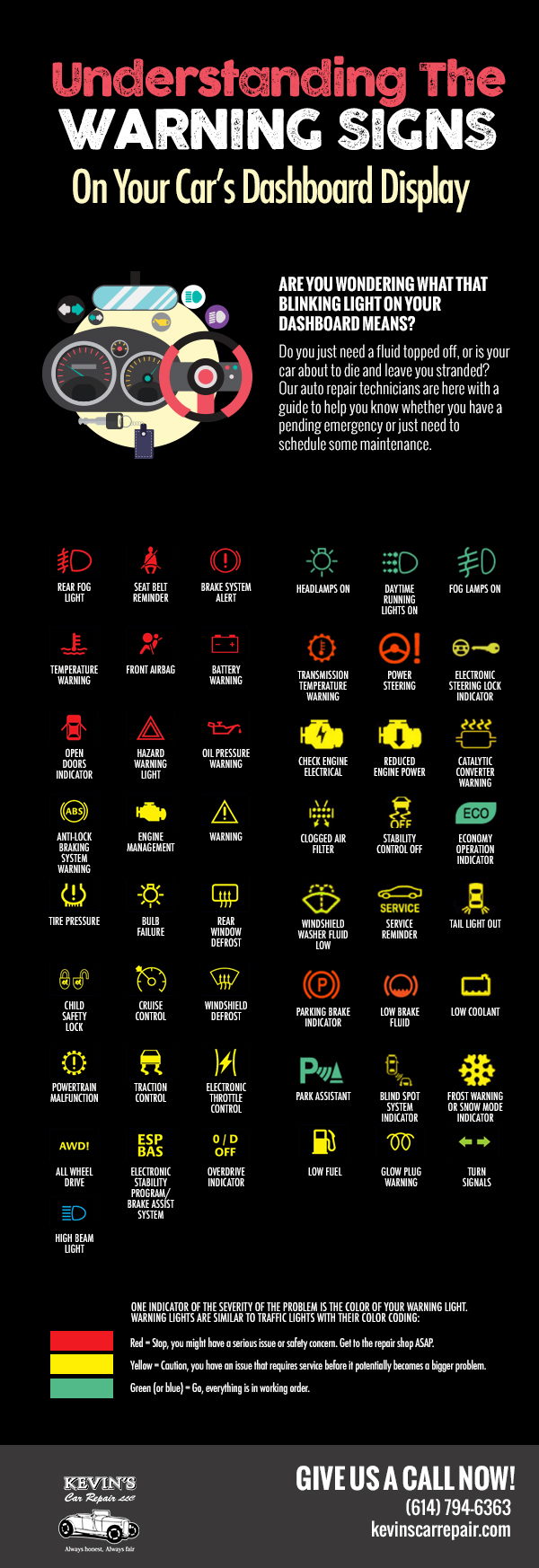Wondering Regarding The Definition Behind Those Dashboard Caution Lights? Gain Understandings Right Into Their Ramifications For Your Car'S Safety And Security And Upkeep
Wondering Regarding The Definition Behind Those Dashboard Caution Lights? Gain Understandings Right Into Their Ramifications For Your Car'S Safety And Security And Upkeep
Blog Article
Personnel Author-Sykes Torres
When you're behind the wheel, those glowing caution lights on your control panel can be a little bit complicated. Do you understand what they're attempting to inform you regarding your vehicle's wellness? Understanding the importance of these lights is crucial for your safety and security and the long life of your lorry. So, https://service-tire-truck-center95172.blogoscience.com/36393949/discover-the-crucial-steps-to-discovering-a-trustworthy-automobile-repair-shop-that-will-certainly-maintain-your-automobile-in-top-form-your-lorry-deserves-the-best following time among those lights pops up, wouldn't you wish to analyze its message precisely and take the necessary steps to address it?
Common Caution Lighting and Interpretations
Recognize usual caution lights in your vehicle and comprehend their significances to ensure risk-free driving.
The most normal caution lights consist of the check engine light, which indicates concerns with the engine or exhausts system. If this light begins, it's crucial to have your automobile checked promptly.
The oil stress advising light suggests low oil stress, requiring instant focus to prevent engine damages.
A blinking battery light might recommend a malfunctioning charging system, potentially leaving you stranded otherwise addressed.
The tire pressure tracking system (TPMS) light signals you to low tire pressure, impacting vehicle stability and gas effectiveness. Neglecting this could bring about unsafe driving problems.
The abdominal light indicates a trouble with the anti-lock stopping system, jeopardizing your capability to stop quickly in emergency situations.
Lastly, the coolant temperature alerting light warns of engine getting too hot, which can lead to extreme damage otherwise dealt with quickly.
Recognizing these common warning lights will assist you address problems promptly and maintain safe driving problems.
Relevance of Prompt Interest
Understanding the usual caution lights in your auto is just the initial step; the value of immediately dealing with these warnings can't be highlighted sufficient to ensure your safety when driving.
When a caution light brightens on your dashboard, it's your cars and truck's method of communicating a prospective problem that requires attention. Neglecting these warnings can result in more severe troubles in the future, endangering your safety and possibly costing you a lot more in repairs.
Trigger attention to cautioning lights can protect against failures and accidents. For instance, a flashing check engine light can indicate a misfire that, if left ignored, could create damages to the catalytic converter. Resolving this immediately can save you from an expensive repair work.
Similarly, a brake system warning light might indicate low brake liquid or used brake pads, vital components for your safety when driving.
Do It Yourself Troubleshooting Tips
If you discover a caution light on your control panel, there are a couple of DIY repairing pointers you can try prior to looking for expert assistance.
The first step is to consult your car's handbook to comprehend what the particular warning light shows. Occasionally http://www.tractionnews.com/effective-ways-to-get-more-business-for-your-car-repair-shop/ can be as simple as a loose gas cap triggering the check engine light. Tightening the gas cap might resolve the trouble.
One more common concern is a low battery, which can trigger various warning lights. Inspecting the battery connections for corrosion and ensuring they're safe might repair the issue.
If a caution light continues, you can try resetting it by detaching the cars and truck's battery for a couple of mins and then reconnecting it. In addition, examining your vehicle's fluid degrees, such as oil, coolant, and brake liquid, can help troubleshoot warning lights connected to these systems.
Conclusion
To conclude, comprehending your car's warning lights is crucial for maintaining your automobile running smoothly and securely. By immediately resolving these informs and recognizing what they suggest, you can avoid expensive repair services and prospective break downs.
Keep in mind to consult your automobile's guidebook for specific information on each alerting light and do something about it as necessary to ensure a trouble-free driving experience.
Keep educated, stay safe when driving!
